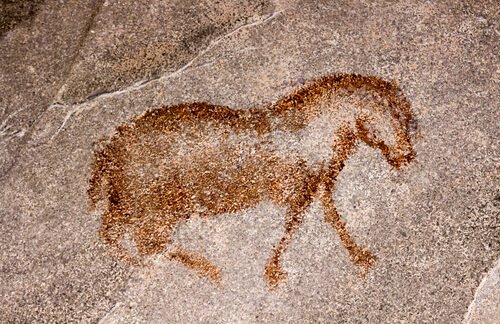Frozen Prehistoric Horse Discovered in Siberia


Written and verified by the vet Eugenio Fernández Suárez
Extinct animals have always caught everyone’s attention, but the truth is that we can only look at them through their fossil remains and ancient paintings. Except in some cases — like this frozen prehistoric horse.
Frozen prehistoric horse discovered in Siberia
A group of scientists in Siberia has managed to rescue the intact remains of a prehistoric horse. The remains belong to the Lena species (Equus lenensis), a wild horse similar to the Przewalski’s horse that lived during the Palaeolithic period, and died around 30,000 to 40,000 years ago.
This prehistoric horse was about two years old when it died. Some of its fur, hooves and probably some of its internal organs are still intact. That’s because this animal somehow got caught in the permafrost.
However, these weren’t the first remains to be found in the permafrost: cave lion cubs and mammoths are two other animals that were perfectly preserved underground in Siberia and other cold regions.

Is it possible to clone a prehistoric horse?
Investigators participating in the expedition suspect that the prehistoric horse they found may have drowned because the animal has no wounds on its body. The specimen’s perfect state of conservation opens the door to cloning and gestation of the embryo in a current horse.
This is one of the most controversial topics in science today because the extinction of these ancient species has probably been re-balanced by the ecosystems. That means that Europe today could hardly host extinct species without creating an imbalance in the ecosystem.
In that respect, other non-extinct species, such as the European bison, are being introduced into other countries through various projects. However, we must clarify that in reality, the European bison didn’t live in the Iberian Peninsula. It was actually an ancestor of the ones painted in Altamira.
The Lena Horse
The Lena Horse lived in Beringia during the late Pleistocene, which is today is the northern region of Canada, Alaska, and Siberia. Scientists believe that adult animals developed a thick coat to protect themselves from the cold of this region.

The Lena horse belongs to the genus Equus, which are the modern horses that lived during the Pleistocene period. Scientists believe that these horses are descendants of a small herbivorous mammal with toes, known as Eohippus.
Later, ancestors of horses increased in size and their toes became hooves. 5 million years appeared the genus Equus, to which both the Lena horse and today’s horses belong to.
The Lena horse, along with other close relatives, probably began their expansion around the globe about 15,000 years ago by crossing the Beringia Bridge. 10,000 years later, all horses, including the Lena horse, were extint in North America.
The Lena horse is another example of a wild horse that has gone extinct. In the Paleolithic periods, humans hunted horses, which is shown in fossil records and cave paintings.
Possibly, hunting eradicated the Lena horse. However, other horse species went through a domestication process, which has led to incredible discoveries like that of the first horse veterinarians.
The only horses considered “semi-wild” today are Przewalski’s horse and the Mustang. Both are actually domesticated animals that were reintroduced to the wild and have recovered part of their untamed nature.
All cited sources were thoroughly reviewed by our team to ensure their quality, reliability, currency, and validity. The bibliography of this article was considered reliable and of academic or scientific accuracy.
Boeskorov, G. G. (2004). The North of Eastern Siberia: Refuge of Mammoth Fauna in the. Gondwana Research, 7(2), 451-455.
This text is provided for informational purposes only and does not replace consultation with a professional. If in doubt, consult your specialist.